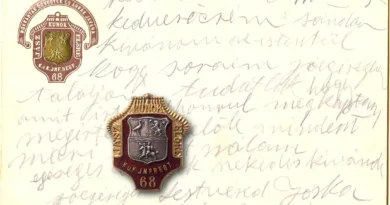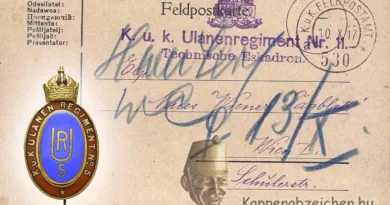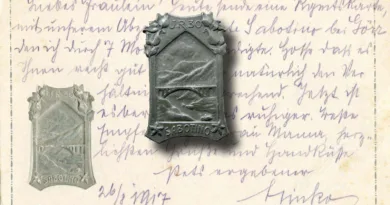5 variants of German 11th Army badges
As a greenhorn badge collector, I was embarrassed for a while as to why the 11th Army had two very different styles of badges. Then I realized there were two 11th armies on the Monarchy’s war fronts. The Austro-Hungarian 11th Army operated in Tyrol. The other, as it turned out, the German 11th army on the Eastern Front and the Balkans. Many k.u.k. units were also deployed under the latter’s subordination. The practice of friendship with the Germans was commonplace. From 1916, major operations of the Monarchy necessitated the help of German units. All major offensive operations were now with German support, often under German leadership. As a result badge designers quickly started making German-related pieces. Perhaps the biggest edition was the 11th Army badge. Of course, the warriors of the Monarchy were also happy to wear this Kappenabzeichen on their hats.
In March 1915, the German 11th Army was organized from 14 new divisions. Its deployment was planned on the Western Front. This plan changed in April when the army was sent to Galicia in support of the Austro-Hungarian counterattack (Gorlice). At the same time, General August von Mackensen was charged with command of the army. On April 19, army command was stationed in Teschen and later Neu-Sandez. By the end of April, the entire army’s personnel and equipment had been transported to the fore field of the Carpathians. The VIth Austro-Hungarian corps was already ordered to the German 11. Army. The German 11th and Austro-Hungarian 4th armies participated in the Gorlice breakthrough, which began on May 2, 1915. Afterwards, more than 250,000 Russian soldiers were captured by the end of June, and the front shifted hundreds of kilometers to the east.
On 18 September, German units were transferred from Galicia to the Balkan front. At that time, the German 11th army was formally disbanded, and instead operated under the name Mackensen Army Group. It’s composition partly changed. Later, the higher command of other German units (part of the former German 12th Army) remained on the Eastern Front. These units were renamed the German 11th Army (commander General Max von Gallwitz).
At the heart of the 11th Army badge the portraits of the two emperors are visible. Allied friendship was symbolized by the badge. This aim was also confirmed by the inscription: “Mit vereinter Kraft”: Under united force. The photo of the post exhibits the five variants of the badge that I know. These are: larger sizes in silver, grey metal and tombak, smaller designs in tombak, one decorated with laurels around the royal portraits.
On the reverse side is the production mark “Bildhauer Gurschner Wien VII/2”. On the back of one of the miniatures there is no needle, but two staples. Their use is not entirely clear. They certainly didn’t fix the badge on a hat or textile. Showcase mockups persisted with dozens of badges fixed in this way. On these cardboard sheets, the badges were fixed with these fasteners. It should be noted that only the Gurschner company produced badges with such a back-side fixation.
Also interesting is the envelope used as a background with the nice Art Nouveau stamping. The circle stamp is the command of the German 11th Army. The unit stamp belongs to a Bavarian Landsturm battalion. The large stamping in the middle depicting a female portrait is really special. I’ve never seen anything like it. It seems like an incredible luxury in wartime conditions.





[…] 2-5, 1915, on the front east of Krakow. The strongest of the units combined for the attack was the German 11th Army under the command of Colonel-General August von Mackensen. The Austro-Hungarian 4th Army was […]